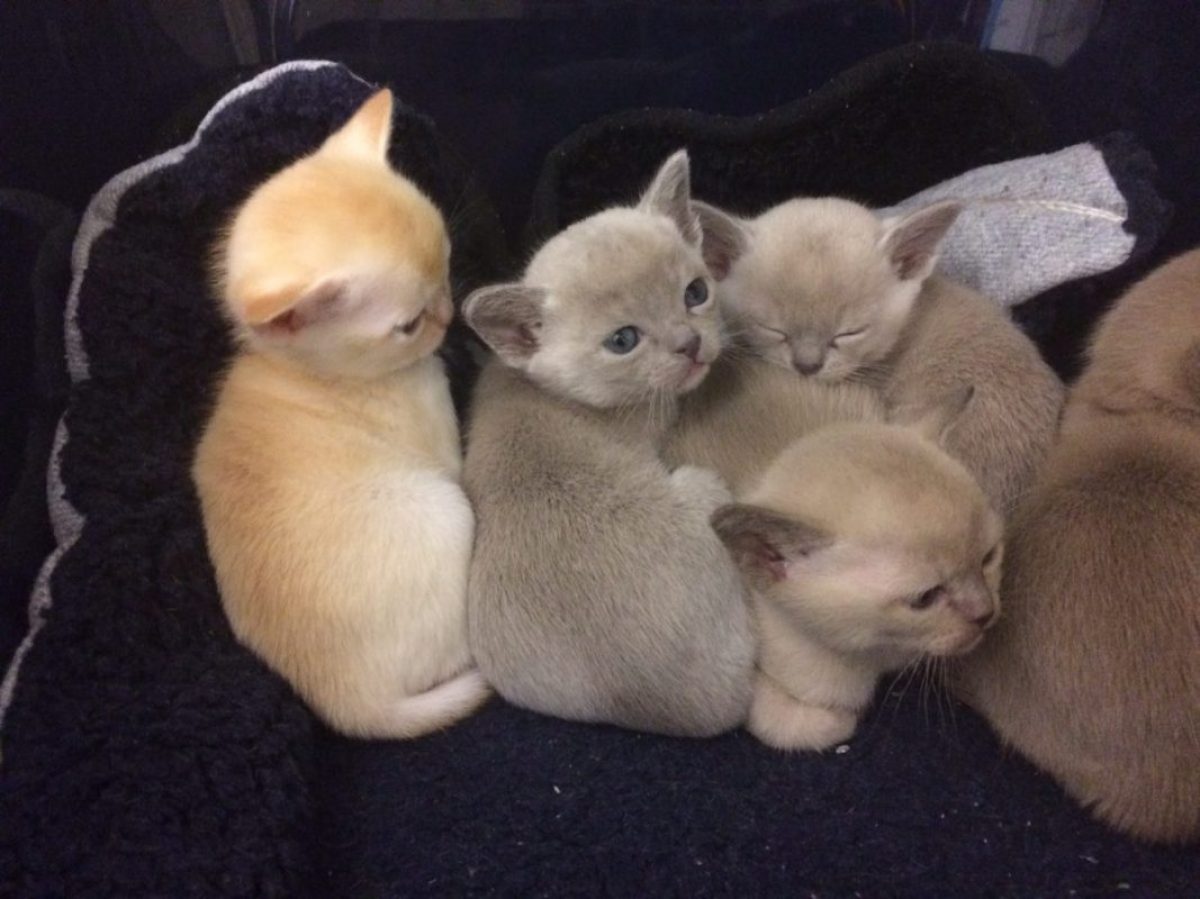The problem: put to the 2015 Judges Conference…
All Burmese originated from the same cat, but their breeding separately in different parts of the world has led to different styles of Burmese. Each of these styles has almost universally been kept apart from the others, so that there is an American Burmese and a number of variations on the English or European Burmese; this latter being the Australian Burmese.
There is a widely-held view that Burmese in Australia have a number of problems —
– Their gene pool is very small, resulting in a high in-breeding rate
[co-efficient]
– Litter size has decreased markedly
– Natural birth rates have decreased
– Animal size has decreased markedly
– Not all breeders are willing to share access of their stock to other
breeders, which accentuates the above problems.
– A number of existing Burmese lines in Australia have the disease
Hypokalaemia (HK), the presence of which can be identified by a DNA test.
– Dr Leslie Lyons, prominent cat geneticist from the University of
Missouri, has led a study which found that Burmese [regardless of their
style] have the lowest level of genetic diversity of all 20 breeds of cat
studied [and therefore presumably one of the lowest levels of
genetic diversity of pedigreed breeds of cat.
– This study concluded that as a result of the above concerns,
pedigreed Burmese will cease to exist within 20 years if a solution
is not put into place.
– Not all breeders agree either that there is a problem or with the
results of Dr Lyons’ study, but the concern is widespread enough
for a solution to be proposed. There is nothing to lose in not
doing so and potentially a lot to gain.
A Proposal:
– That Australian Burmese breeders be allowed to outcross to any
or all of Thai cats, American Burmese and Mandalays, with the
following controls —
– Any such outcrossing be done only with the prior approval of the
relevant registration body and through the use of an approved
experimental breeding programme. All the normal generational
checks, inspections of stock and marking as Gen 1 for 1st cross to
G4 for full register be conducted.
– Thai cats are himalayan-patterned [Cs], so offspring from
outcrossing to them will need to be selected with a view to
eliminating the Cs gene. The available DNA test carried out
through correct protocol i.e. by a veterinarian or accepted officer,
would achieve this, so that freedom from the Cs gene could be
recorded on the pedigree of the cat concerned and ensuing
pedigrees on which the cat appears.
– All American Burmese used for outcrossing are to have all
available DNA tests for known conditions [Head Defect, Gangliosidosis (GM2) and
HK], using the same protocol so these conditions are kept out of
Burmese breeding programmes in Australia.
– Only Mandalays free from the cinnamon gene, from Oriental and
Abyssinian be used for outcrossing and that DNA testing be used to
verify this.
– The use of the above 3 outcross breeds be recorded on pedigrees
by “Thai”, “AM Burmese” and Mandalay, respectively.
– A note should be displayed on the pedigree of all Burmese in
Australia advising either that “This cat has only Australian
Burmese on it” or “This cat has “Thai”, “AM Burmese” or
“Mandalay” on it.
– The above outcrossing be initially allowed for a period of 10
years, to be reviewed toward the end of that time for possible
extension/s of time.
– The above outcrossing be approved by all CCCA member bodies,
with a view to attempting to have it approved in all Australian
registries.
– No breeder will be required to use any of these outcross breeds if
they choose not to, but it will enable those who wish to broaden
their gene pool and attempt to reverse some of the problems
outlined at the start.
– All Burmese breeders in Australia be required to have the DNA
test for GM2 performed under correct protocol, as
above, on all existing Australian-line breeding stock unless both
parents have been DNA tested and shown to be GM2 free.
Pedigrees should clearly state either GM2-free or GM2-carrier.
This proposal is a modification of the proposal presented to the
2015 Judges Conference and is submitted on behalf of the CCCA
November 2015 meeting by: –
– Dr J Nicholls [Burmese breeder, noted veterinarian and member
of CCCA Breed Council] and
– C Merritt [Chair of the CCCA Judges Conference and member of
CCCA Breed Council]
– M Ristuccia [principal Mandalay breeder],
– Beverley Jones [source of original Burmese proposal to the conference
and Burmese breeder].
– R. U’Ren [co-ordinating the proposal].
